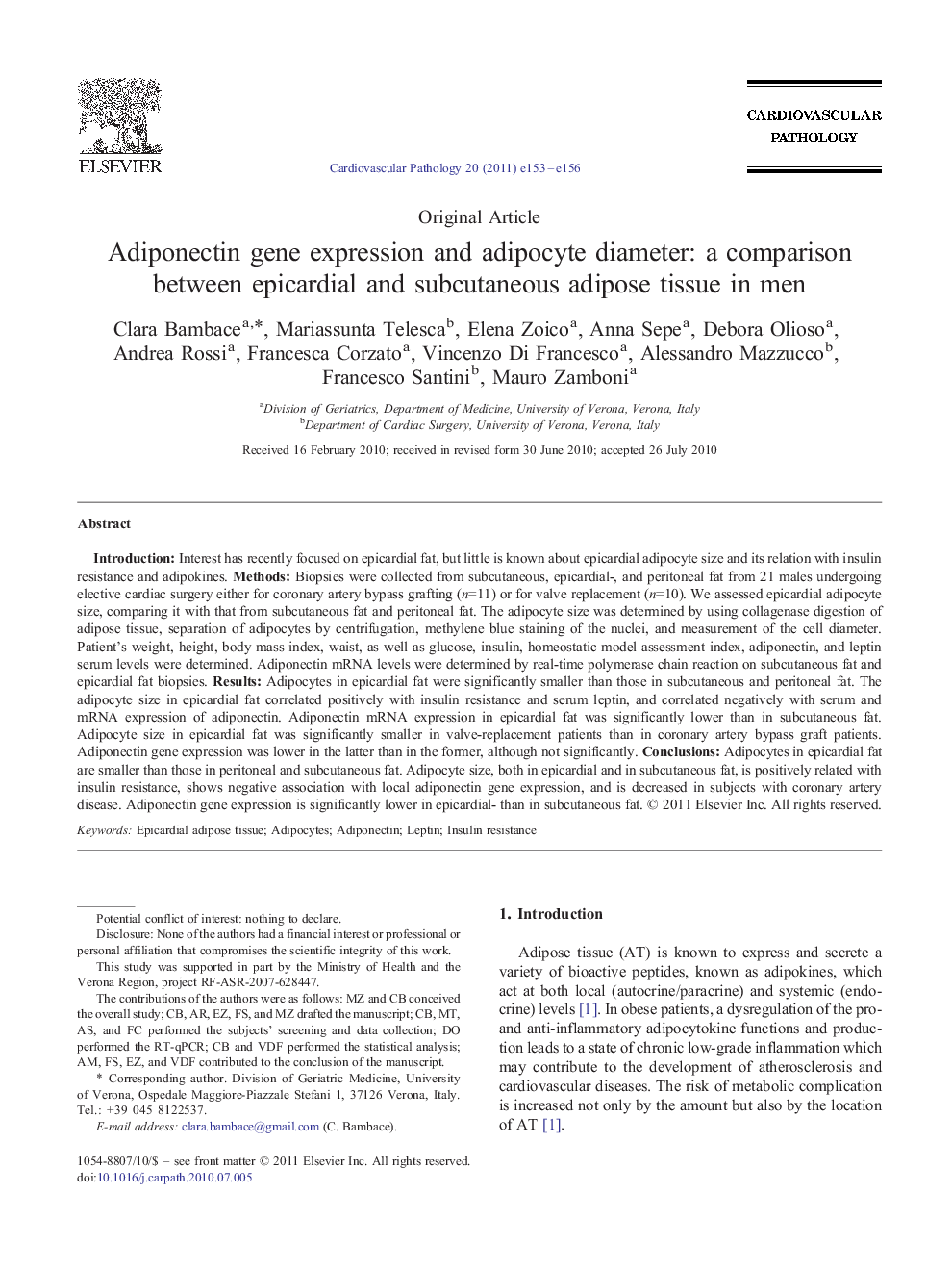| Article ID | Journal | Published Year | Pages | File Type |
|---|---|---|---|---|
| 2899326 | Cardiovascular Pathology | 2011 | 4 Pages |
IntroductionInterest has recently focused on epicardial fat, but little is known about epicardial adipocyte size and its relation with insulin resistance and adipokines.MethodsBiopsies were collected from subcutaneous, epicardial-, and peritoneal fat from 21 males undergoing elective cardiac surgery either for coronary artery bypass grafting (n=11) or for valve replacement (n=10).We assessed epicardial adipocyte size, comparing it with that from subcutaneous fat and peritoneal fat. The adipocyte size was determined by using collagenase digestion of adipose tissue, separation of adipocytes by centrifugation, methylene blue staining of the nuclei, and measurement of the cell diameter. Patient's weight, height, body mass index, waist, as well as glucose, insulin, homeostatic model assessment index, adiponectin, and leptin serum levels were determined.Adiponectin mRNA levels were determined by real-time polymerase chain reaction on subcutaneous fat and epicardial fat biopsies.ResultsAdipocytes in epicardial fat were significantly smaller than those in subcutaneous and peritoneal fat. The adipocyte size in epicardial fat correlated positively with insulin resistance and serum leptin, and correlated negatively with serum and mRNA expression of adiponectin. Adiponectin mRNA expression in epicardial fat was significantly lower than in subcutaneous fat. Adipocyte size in epicardial fat was significantly smaller in valve-replacement patients than in coronary artery bypass graft patients. Adiponectin gene expression was lower in the latter than in the former, although not significantly.ConclusionsAdipocytes in epicardial fat are smaller than those in peritoneal and subcutaneous fat. Adipocyte size, both in epicardial and in subcutaneous fat, is positively related with insulin resistance, shows negative association with local adiponectin gene expression, and is decreased in subjects with coronary artery disease.Adiponectin gene expression is significantly lower in epicardial- than in subcutaneous fat.
